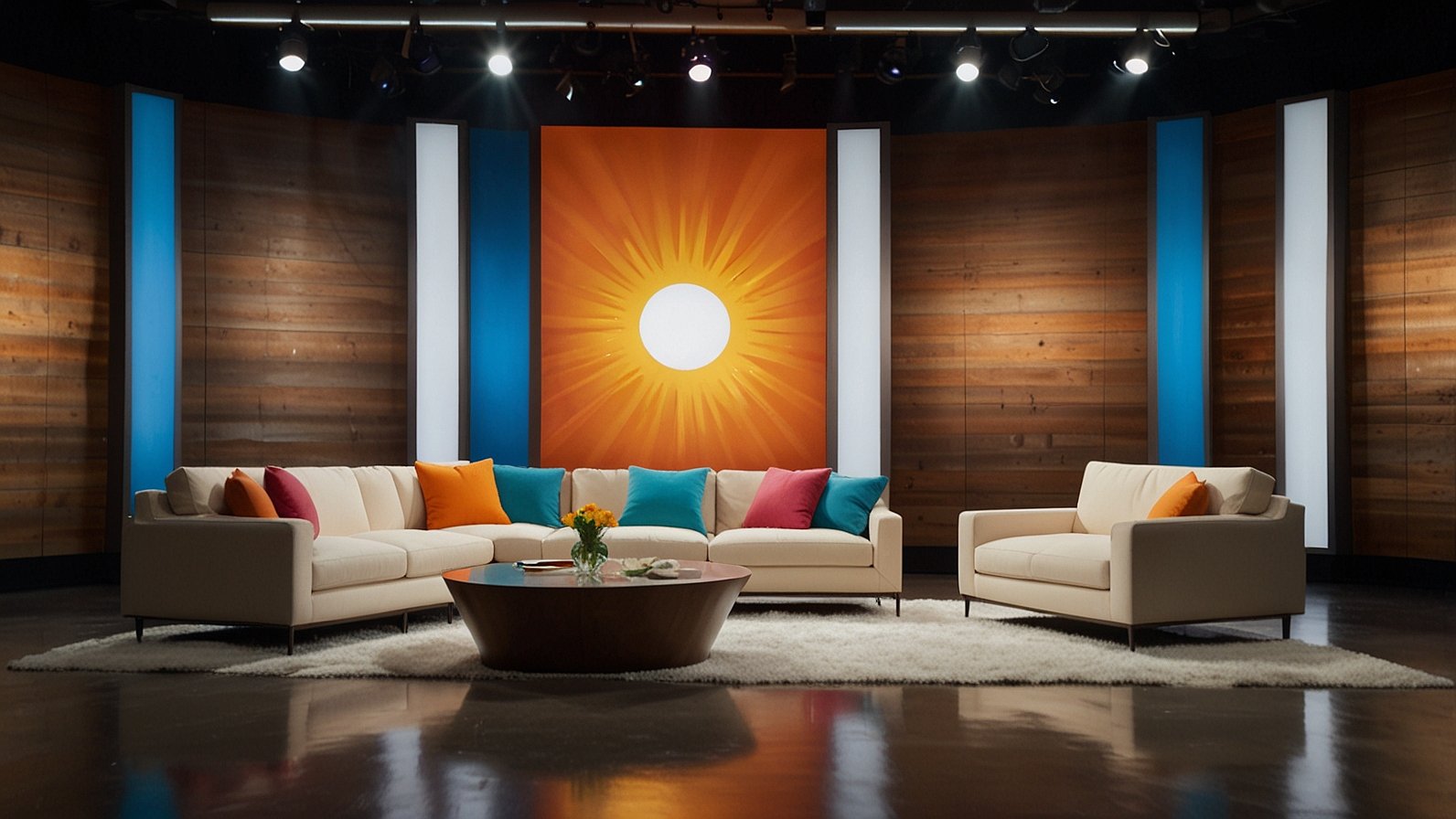Think of this: You’ve spent hours hiking deep into your favorite wilderness spot, finally reaching that perfect, secluded clearing. You pitch your camp, eager for solitude… only to realize your bright blue tent and gear stand out like a neon sign against the forest. Suddenly, that “perfect” spot feels exposed. Ever wish you could just blend in? That’s where the magic of Tarnplanen comes in. Forget flimsy tarps; these rugged, camouflage masters are the unsung heroes of concealment and protection, trusted by pros who demand more from their gear. Let’s dive deep into the world of Tarnplanen and unlock their secrets.
What Exactly Are Tarnplanen? (Beyond Just a Camo Tarp)
Okay, let’s get down to basics. Think of Tarnplanen (pronounced roughly “tarn-plah-nen,” coming from German words for “conceal” and “sheet/plan”) not just as tarps, but as tactical chameleons in fabric form. Born from serious military needs, these aren’t your average backyard covers.
- Core Identity: Rugged, heavy-duty tarpaulins specifically engineered with advanced camouflage patterns and durable materials.
- Primary Mission: Concealment first and foremost – making people, gear, vehicles, or structures visually disappear into specific environments.
- Secondary Superpower: Providing incredibly tough protection against the elements – wind, rain, sun, snow, and abrasion.
- The DNA Difference: It’s that deep-rooted military heritage that sets them apart. This means they’re built to perform under pressure, in the toughest conditions, where failure isn’t an option. They’ve been battle-tested, literally.
Why Trust Tarnplanen? The Core Pillars of Their Power
Why do special forces, serious hunters, wildlife photographers, and hardcore bushcrafters swear by them? It boils down to three unbeatable strengths:
- Multifunctional Utility (The Swiss Army Knife of Tarps): One Tarnplane, countless uses. Shelter roof? Check. Groundsheet? Check. Gear wrap? Check. Hide blind? Check. Emergency stretcher? Even vehicle cover? Absolutely. Their versatility is legendary.
- Environmental Blending (Mastering the Art of Disappearing): This is where they truly shine. Unlike generic green or brown tarps, Tarnplanen use sophisticated, environment-specific camouflage patterns:
- Woodland (e.g., Flecktarn, US Woodland): Breaks up outlines with dappled greens, browns, and blacks for forests.
- Desert (e.g., Tropentarn, Desert Night Camo): Uses tans, beiges, and light browns for arid landscapes.
- Snow/Alpine: Incorporates whites and greys.
- Multi-Terrain Patterns (MTP, Multicam): Designed to work reasonably well across varied environments.
- 3D Effects: Some incorporate textured surfaces or attached foliage loops to break up the flat silhouette even further. It’s science meeting art to make you invisible.
- Resilient Protection (Built Like a Tank): They laugh in the face of harsh weather and rough handling. This comes from:
- Heavy-Duty Fabrics: Think poly-cotton blends (ripstop!), or high-denier polyester, often PU-coated or silicone-treated for water resistance (and often fire-retardant!).
- Reinforced Stress Points: Grommets aren’t just punched in; they’re layered and riveted for maximum strength where ropes pull tight.
- Weatherproofing: Highly water-resistant or waterproof, windproof, and often UV-resistant to prevent sun damage and fading.
Tarnplanen vs. Standard Tarps: Why the Difference Matters
| Feature | Standard Tarp | Tarnplanen |
| Primary Focus | Basic Protection | Concealment + Rugged Protection |
| Camouflage | Often Solid Colors (Blue, Green) | Advanced, Environment-Specific Patterns |
| Durability | Varies (Often Lightweight) | Extremely High (Military-Grade) |
| Material | Polyethylene, Vinyl, Light Poly | Heavy Poly-Cotton, Silnylon, Robust Poly |
| Reinforcements | Basic Grommets | Heavy-Duty Riveted Grommets, Webbing |
| Weatherproofing | Waterproof (Often Stiff/Crinkly) | Water-Resistant/Proof, Windproof, UV Res. |
| Fire Resistance | Rarely | Often Included |
| Cost | Generally Lower | Higher (Reflecting Durability & Tech) |
| Best For | Backyard, Temporary Cover | Tactical, Hunting, Serious Bushcraft, Stealth Camping |
Read also: PedroVazPaulo Wealth Investment: Smart Money Plans
The Evolution of Tarnplanen: From Battlefield to Backcountry
Understanding their roots helps appreciate their design. Tarnplanen emerged directly from military necessity. Armies needed ways to hide equipment, field hospitals, command posts, and personnel from aerial and ground observation. Early versions were simple canvas, but the demands of modern warfare drove innovation:
- Material Science: Moving from heavy, mildew-prone canvas to lighter, stronger, weather-resistant synthetics and blends.
- Camouflage Science: Evolving from basic disruptive patterns to complex, digitally designed schemes based on how the human eye and optics perceive shapes and colors in different terrains (think German Flecktarn or US Multicam).
- Multifunctionality: Recognizing that every ounce carried counts, designs incorporated features for multiple uses (e.g., grommets for stretcher poles, loops for attaching natural foliage).
This heritage means every modern Tarnplane carries that DNA of relentless testing and refinement under the most extreme conditions. Brands like Carinthia (Austria), Snigeldesign (Sweden), and Tasmanian Tiger (Germany) are renowned for their high-quality military-spec offerings, while companies like BCB and others produce excellent civilian-focused versions.
Unleashing Your Tarnplane: Key Applications in the Wild
So, what can you actually do with one? The list is impressively long:
- Stealth Camping & Bushcraft: Create low-visibility shelters that genuinely blend in. Use it as a groundsheet to prevent light-colored sleeping pads from giving away your position. Wrap noisy gear.
- Hunting Blinds: Construct effective hides quickly and quietly. The camo breaks up your outline far better than commercial pop-up blinds against natural backgrounds. Real Example: A whitetail hunter in the dense hardwoods of Pennsylvania uses a Woodland-pattern Tarnplane draped over a simple frame, significantly increasing close encounters by eliminating his “blob” silhouette.
- Wildlife Photography & Observation: Get closer to wildlife without spooking them. Drape it over yourself and your tripod for an instant hide.
- Gear Protection & Concealment: Cover kayaks, canoes, ATVs, or firewood piles at base camp. Keep your gear dry and hidden from casual view.
- Emergency Shelter & Survival: An absolute essential in any serious survival kit. Provides critical protection from elements and can signal for help (use the bright inner side if it’s reversible!).
- Tactical & Security: Military and law enforcement uses are obvious (hiding vehicles, equipment, temporary ops centers), but even for preppers or rural homeowners, having a way to quickly conceal valuables or a bug-out location adds a layer of security.
- Backup Rain Gear: Got caught in a downpour? Wrap it around yourself or your pack. Heavy-duty Tarnplanen handle it easily.
Debunking the Myths:
- Myth: “Any camo tarp will do the same job.” Reality: Cheap imitations often use inferior fabrics that rip easily, have poorly secured grommets that pull out, and use simplistic, ineffective camouflage patterns that might actually stand out in the wrong environment. Tarnplanen are built to a different standard.
- Myth: “They’re too heavy and bulky for backpacking.” Reality: While heavier than ultralight silnylon, modern poly-cotton Tarnplanen offer an unbeatable balance of durability, functionality, and concealment. For missions where stealth is paramount (hunting, photography), the weight is a justified trade-off. Plus, they pack down reasonably well.
- Myth: “Military gear is uncomfortable and complicated.” Reality: Tarnplanen are fundamentally simple: a tough sheet with reinforced attachment points. Their design prioritizes function and reliability, which translates directly to user confidence in the field.
Choosing Your Perfect Tarnplane: A Buyer’s Checklist
Not all Tarnplanen are created equal. Here’s what to scrutinize before you buy:
- Your Primary Environment: This is CRITICAL! Match the camouflage pattern to where you’ll use it most. Woodland for forests, Desert for arid zones, Multi-Terrain for varied use. Using a Woodland pattern in the desert makes you a dark, obvious blob!
- Material & Weight:
- Poly-Cotton Blends (e.g., 65% Poly / 35% Cotton): The gold standard for durability, quietness (no crinkly noise!), breathability, and fire resistance. Heavier but supremely tough. (e.g., Carinthia’s “Shelter” tarps).
- Heavy Polyester (e.g., 500D+): Often PU-coated, very water-resistant, strong, and slightly lighter than poly-cotton. Can be noisier when new.
- Silnylon/Silpoly: Ultralight options, very packable, highly waterproof. Sacrifice some ruggedness and noise suppression for weight savings. Better for backpacking where absolute stealth isn’t the primary goal over weight.
- Size Matters: Consider what you need to cover. Common sizes range from compact 1.5m x 1.5m (great for gear) to large 4m x 4m or even 6m x 4m (for substantial shelters or vehicle covers). 3m x 3m is a very versatile middle ground.
- Reinforcements: Look for riveted, multi-layer grommets or webbing loops at corners and along edges. These are your anchor points – they must be bombproof. Double-stitched seams are essential.
- Water Resistance: Check the rating (e.g., PU 3000mm, Silicone). While rarely fully waterproof like a tent fly (seams are hard to fully seal on a tarp), high-end Tarnplanen offer excellent water resistance sufficient for heavy rain. Poly-cotton absorbs some water but remains strong.
- Fire Resistance: A major safety advantage of true mil-spec poly-cotton Tarnplanen. Crucial if used near stoves or fires. Verify the specifications.
- Extra Features: Attachment loops along edges? Foliage loops? Reversible patterns (camouflage on one side, bright orange or white on the other for emergencies)? These add significant value.
Mastering the Art: Using Your Tarnplane Effectively
Owning it is step one. Using it well is the art. Here are pro tips:
- Site Selection is Stealth: Even the best camo won’t hide you on a bare ridgeline. Use natural contours, vegetation, and shadows to your advantage. Set up within the environment, not against it.
- Breaking the Silhouette: This is key! Don’t just drape it tightly over a square object. Let it sag naturally, create folds and irregular shapes. Use branches or cordage to add depth and break up straight lines. Attach local foliage to the loops if available.
- Secure Anchoring: Use strong paracord or utility cord. Learn reliable knots like the trucker’s hitch for adjustable tension. Anchor points should be solid (trees, rocks, stakes driven deep). In high winds, extra guylines are your friend.
- Pitching Versatile Shelters: From simple lean-tos and A-frames to more complex plow points or diamond flys – a Tarnplane can do it. Practice pitches in your backyard before heading out.
- Groundsheet Savvy: Place it carefully to avoid noisy leaves or twigs underneath. Fold excess material under to keep it hidden.
- Maintenance: Brush off dirt and debris. Air it out thoroughly if wet before packing away long-term to prevent mildew (especially poly-cotton). Avoid machine washing unless absolutely necessary; spot clean instead. Reapply DWR (Durable Water Repellent) treatment if water stops beading.
5 Practical Tips to Get Started with Tarnplanen
Ready to embrace the Tarnplane life? Here’s your action plan:
- Identify Your Need: Be honest – is it hunting, bushcraft, photography, or general rugged backup? This dictates size, pattern, and material priority.
- Research Reputable Brands: Look for Carinthia, Snigeldesign, Tasmanian Tiger, BCB, Mil-Tec (budget option, check quality variance). Read reviews focusing on durability and real-world concealment.
- Invest in Core Quality: Prioritize fabric strength, grommet reinforcement, and the right camo pattern over saving a few bucks. This is buy-once-cry-once gear.
- Practice Pitching: Before your critical trip, practice setting up different shelters with your Tarnplane in a local park or your yard. Master those knots!
- Pack the Right Cordage: Don’t rely on flimsy string. Carry a substantial hank (~50ft) of strong paracord or utility cord specifically for your tarp.
The Final Wrap: Why Tarnplanen Earn Their Place
In a world of disposable gear, Tarnplanen stand apart. They represent a fusion of rugged practicality and the subtle art of invisibility, forged in demanding environments. Whether you’re a hunter seeking that elusive trophy buck, a photographer waiting for the perfect wildlife shot, a bushcrafter building a hidden shelter, or simply someone who values preparedness with top-tier gear, a quality Tarnplane is an indispensable tool. It’s more than just a tarp; it’s your key to blending seamlessly with the wild, protected from whatever nature throws your way.
What’s your biggest challenge when trying to stay hidden outdoors? Have you used a Tarnplane before? Share your experiences or questions below!
Frequently Asked Questions (FAQs)
- Q: Are Tarnplanen completely waterproof?
A: High-quality Tarnplanen are highly water-resistant, often rated for heavy rain (e.g., PU 3000mm+ or silicone-treated). Seams might eventually seep under prolonged, intense downpours, but they offer excellent protection. Poly-cotton absorbs some water but remains strong. - Q: How do I clean my Tarnplane without damaging it?
A: Avoid machine washing. Brush off loose dirt. For stains, spot clean gently with a soft brush, mild soap (like Nikwax Tech Wash), and cold water. Rinse thoroughly. Hang to air dry completely before storing. Reapply DWR spray if water stops beading. - Q: Which camouflage pattern is truly the “best”?
A: There is no single “best” pattern. The best pattern is the one that matches your specific environment. Woodland for forests, Desert for arid/sandy areas, Snow for alpine/winter, and Multi-Terrain (like Multicam) for varied or transitional landscapes. Research patterns common to your region. - Q: Are Tarnplanen too heavy for backpacking?
A: It depends on your priorities. Poly-cotton Tarnplanen are heavier than ultralight silnylon tarps. However, they offer superior durability, quietness, fire resistance, and concealment. If stealth and ruggedness are top concerns (e.g., hunting), the weight trade-off is often worth it. For pure lightweight backpacking, silnylon might be better. - Q: Can I use a Tarnplane for everyday purposes, not just stealth?
A: Absolutely! Their extreme durability makes them fantastic for general tough jobs: covering firewood, protecting vehicles or boats during transport, as a heavy-duty picnic groundsheet, a temporary workshop cover, or an emergency shelter during disasters. They are incredibly versatile workhorses. - Q: Do the grommets really make that much difference?
A: Yes! Reinforced, riveted grommets or webbing loops are crucial. Cheap grommets tear out under tension, especially in wind or when used as a stretcher. This is a key indicator of a quality Tarnplane built for real use, not just looks. - Q: Are genuine military surplus Tarnplanen a good buy?
A: They can be, offering proven durability at a lower cost. However: Inspect carefully for excessive wear, damage, mildew, or dry rot (especially in older canvas ones). Surplus patterns might not be ideal for your location. New commercial brands often offer updated materials and patterns based on that mil-spec heritage.
You may also like: Sculpt Your Professional Future with Strategic Growth Plans











